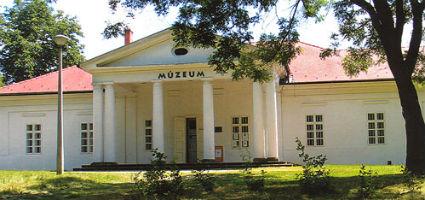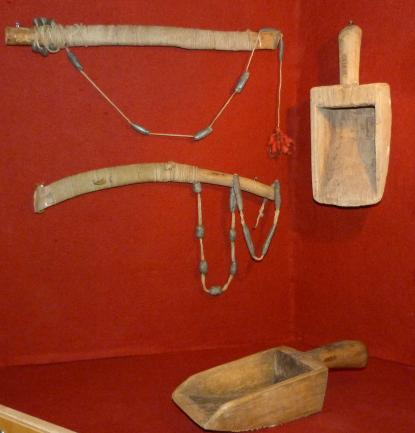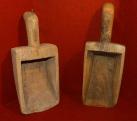2024. May 6. Monday
Pál Kiss Museum - Tiszafüred
 |
Address: 5350, Tiszafüred Tariczky sétány 6.
Phone number: (59) 352-106
E-mail: kisspalmuz@gmail.com
Opening hours: Tue-Sat 9-12, 13-17
|
The exhibition has closed for visitors.
2015.07.01. - 2015.08.31.
Museum tickets, service costs:
|
Ticket for adults
|
500 HUF
|
/ capita
|
|
Group ticket for adults
(min. 10 people)
|
150 HUF
|
/ capita
|
|
Ticket for students
|
250 HUF
|
/ capita
|
|
Ticket for pensioners
|
250 HUF
|
/ capita
|
|
Ticket for families
(2 adults + max. 3 children)
|
750 HUF
|
/ family
|
|
Program ticket
|
300 HUF
|
/ capita
|
|
Season ticket
|
1000 HUF
|
|
|
Group guide
(max. 40 people)
|
2000 HUF
|
/ group
|
|
Photography
|
1000 HUF
|
|
|
Video
|
1000 HUF
|
In our exhibition we show some traditional instruments used for fishing in River Tisza. There are two water scoops (in traditional Hungarian it is called “szapoly”) and two tools for catching Wels catfish (in Hungarian it is called “kuttogtató”).

Water scoops were used for taking the water out of the fishing boats. These were carved from soft wood by the fishermen and were used in the middle of 20th century in Tiszafüred and in Tiszaörvény. The two traditional tools of catching Wels catfish (“kuttogtató”) are special instruments of fishers connected to the traditional Hungarian method of fishing for Wels catfish. It is called ’kuttyogatás’, a special sound effect made with this instrument on the surface of water to attract catfish resting in its hole. This method is said to be a very long-lasted traditional process of catching Wels catfish rooted before the Hungarian Conquest (it was in 896, in the 9th century).
Translated by Vadász István

Water scoops were used for taking the water out of the fishing boats. These were carved from soft wood by the fishermen and were used in the middle of 20th century in Tiszafüred and in Tiszaörvény. The two traditional tools of catching Wels catfish (“kuttogtató”) are special instruments of fishers connected to the traditional Hungarian method of fishing for Wels catfish. It is called ’kuttyogatás’, a special sound effect made with this instrument on the surface of water to attract catfish resting in its hole. This method is said to be a very long-lasted traditional process of catching Wels catfish rooted before the Hungarian Conquest (it was in 896, in the 9th century).
Translated by Vadász István


